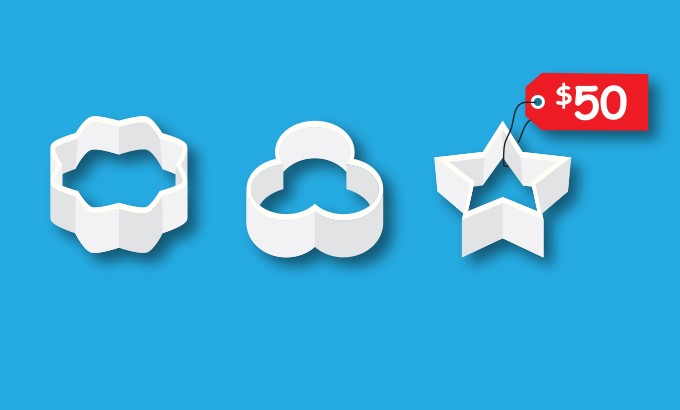The Problem With the $50 Logo
June 8, 2015

The Internet and its proliferation of cheap brand executions may have changed the business of graphic design, but ultimately, you get what you pay for
My face went pale with fear and I didn’t know what to say. I was staring at Tailorbrands.com. Now I understood how taxi drivers felt when Uber was launched, or a hotel manager after Airbnb.
“Look!” said my colleague Scott, “This website automates the process of designing a logo! You are given lots of options. They are customizable and when you’re done it downloads final artwork files. It even gives the client a standards manual — all for only $50!”
Scott is typical of the tech-savvy entrepreneur who, like me, rents an office in a shared working environment. He was thrilled with the very stylish and user-friendly interface of Tailorbrands.com, but all I could see was a website taking my livelihood away.
This wasn’t the first time a website would devalue what I do and disrupt the graphic design industry. In 2009, two Melbourne entrepreneurs launched 99 Designs. Their crowd-sourcing site hosts contests where clients submit a brief, and hundreds of designers do finished work competing for very meagre prize money. Average price for a logo? $250 USD.
The real problem isn’t just the tiny fee, it’s that hundreds of losers work for free. The site makes a great deal of money inviting designers to work on spec ($12 million in 2011 according to an article in Forbes). Spec work, or providing creative work without any financial compensation for your time, is an exploitative and unethical practice. Despite strong criticism from the design community and excellent educational resources like nospec.com, 99 Designs keeps growing.
But the ethics don’t seem to burden the designers who sign up daily, and the price and volume of work is very attractive to clients. Two start-ups in my building — both of which I interviewed for this column — cited those reasons for using crowd-sourced sites to design their logos. They are small companies that don’t want to spend profits on a quality logo, but recognize the need to have some branding (one of them hired me to typeset a business card with their 99 Designs creation, but objected when I recommended improving its poor letter spacing).
These two companies also got a kick out of working with someone half way around the world. In fact, a quick survey on 99 Designs reveals designers from Serbia, Romania and Indonesia who are multiple contest winners. I imagine for them even the small fee in US dollars is quite a lot when converted into their currency. The important qualification when you sign up is not whether you have a degree in design, but whether or not you can speak English.

Graphic by David Thorne
In addition to these sites, the web is loaded with templates for every type of marketing product imaginable. Newsletters, product brochures and annual reports can easily be downloaded. All of them promise a professional quality design — just insert your own content. No need for expensive designers. I was seduced by one of these products for a client recently. She was a personal trainer who didn’t have a lot of money, so I found a website template for only $45 that was customized for her industry. What I thought would be a solution ended up being an enormous waste of time. I spent five times the amount of time it would have taken me to start from scratch, completely redesigning the template.
Good design isn’t about generic templates or websites that automate the process of creating a logo. It is about creating something unique for your client, truly customizing it to their requirements, and delivering a product that makes them stand out from their competitors.
It takes time to understand your customer’s needs, to conduct research that provides valuable insight, to brainstorm original and innovative ideas and execute them with exceptional craft. In short, it takes time to do quality work. Our challenge is to find customers who understand that and see design as an investment in their business. An investment that will deliver returns in the long run.
This doesn’t mean that hiring a designer should be an expensive proposition. We need to respond to competitive forces in the marketplace and find pricing strategies that keep work coming through the door. But we also need to understand the value of our services and not reduce our rates in a race to the bottom, competing with others whose product is inferior.
In the end, what matters is finding clients who appreciate the value of what you provide as a designer and only produce work that you would be proud to call good design.
David Thorne is the creative director at David Thorne Communications and an assistant professor at OCAD University.







